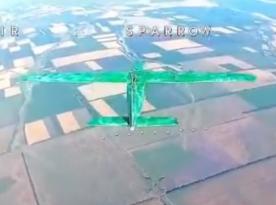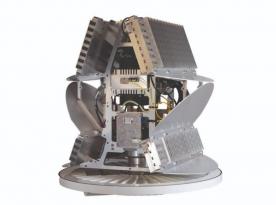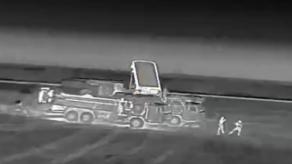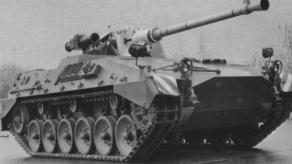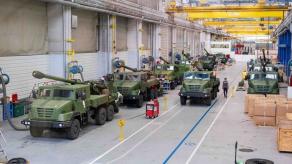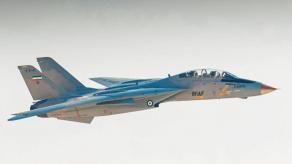Of course, war is no leisurely stroll. Fierce battles come with painful losses and heroic acts — when the enemy is defeated despite overwhelming odds, and a comrade is shielded until one’s last breath. The Legion is a large international family where everyone knows each other as well as they know themselves, supporting one another in every way possible. Shortly after this interview, the unit once again departed for combat operations. Today, its fighters — legionnaires of the free world — with their weapons and courage, are destroying a modern incarnation of ancient global evil and forging history: a new history of unbreakable Ukraine and a peaceful future for a safe Europe.

We present an interview with Major Oleksandr Yakymovych, commander of the 2nd International Legion for the Defense of Ukraine.
Read more: Top IT Professional Trains Soldiers of the International Legions for Defense of Ukraine
– Tell us about your background and military experience.
– For 25 years I was in business — quite successfully. At the beginning of 2023, I joined the military. Fate brought me to this Legion. My English and organizational skills played a key role in being accepted here.
I deployed with a tactical group to the East two weeks after arriving at our permanent base. I initially served in the HQ. The former commander saw potential in me and offered me the chief of staff role.
We operated in the Serebriansky forest. At the end of May and beginning of June 2024, the previous commander fell ill, and I was temporarily appointed as acting commander. It was a period of intense operations. Together with the former commander, we got through it with dignity. After that, we were deployed to Chasiv Yar, Pokrovsk.

– These areas are associated with brutal combat and harsh conditions. What was the most challenging part for you and your junior commanders?
– That’s a hard question because there’s nothing easy in war.
First, we are an international unit. Commanding guys from 30 countries, all with different languages, cultures, and mentalities — that’s a challenge in itself. On top of that, we’ve always been deployed to the toughest, most active combat zones. We’ve had to coordinate with brigades and neighboring units, organize logistical support, and conduct combat operations.
It’s not simple, especially working with foreigners. But we built our internal system and accomplished our missions effectively — whether in the Serebriansky forest, Chasiv Yar, or in the Pokrovsk direction.
– Which missions stand out most in your memory?
– Near Chasiv Yar, we were tasked with storming buildings in the forest. To reach that forest, we had to cross a 400-meter open field — all under constant enemy observation, active combat, and intense FPV drone activity.
Our guys pulled it off. They made it to the forest, took the buildings, cleared and held them — and not a single soldier was wounded. Everything went exactly according to plan. It was a team of Colombians who executed the mission flawlessly.
In the Pokrovsk direction, we were tasked with defensive operations. Over two months, despite constant enemy artillery, mortars, and drone activity, our casualties were minimal. It’s one of the most intense and difficult areas, but we held our ground. The guys did great. When they had to stay at positions for 12 days instead of the planned five — they endured.
We repelled multiple assaults — 11 just in the first days after arriving, across our three defensive lines.

– What are the strengths or special needs of the legionnaires, particularly cultural and religious?
– Let me start with our chaplain—a bright personality from Brazil who is part of the Ukrainian Church there. He’s incredibly positive, and the guys love him. He handles spiritual needs across all denominations.
Of course, mentality shapes how people operate. For example, most of our troops now are Latin Americans. These guys don’t like sitting still. They prefer action, and it’s no problem for them to leave a trench and engage in close combat. However, sitting in static positions for extended periods may be hard for them.
There are many nuances. In particular, in dietary differences. The cuisine of Ukrainians, Latin Americans, Europeans, and representatives of other regions is different. We always have to consider this, so we prepare separate meals for each group.
Americans who join us often come from special forces backgrounds. They’re experienced, but trench warfare hasn’t existed since WWII. And we are fighting a trench war. The people who come to us mainly have combat experience in special operations. Even in Iraq and Afghanistan, the Americans mainly used special forces. This, of course, leaves its mark. People are trained for active action, not defense in trenches. Still, our recent missions have mostly been defensive.
– What are the specifics of combat training in the Legion?
It’s critical to maintain combat readiness. We set up a training range every time we arrive in a new area. Troops who are not on missions either rest or train. We structure rotations to ensure both recovery and training. We have very experienced instructors with us on deployment. They keep our soldiers sharp. The war constantly evolves, so up-to-date, real-world experience is vital.
This is a drone war now. But drones aren’t a cure-all — artillery, infantry, and other arms still matter. Still, reconnaissance has completely changed due to drones. They’re always in the sky, friend and foe alike. So, constant aerial surveillance shapes all operations.
Infantry tactics have also changed. Every position must be shielded from FPV drones with better cover and camouflage than before.
On the other hand, drones stepped up when we had shortages of artillery shells. Now, they’re increasingly effective for counter-battery fire and striking distant targets.
Technology is advancing rapidly and transforming the battlefield. Ground drones have not yet been developed to such an extent, but it is only a matter of time. Their main advantage is the payload. No airborne drone, not even the “Vampire,” can lift as much as a ground drone. The use of ground drones will increase. They can be used as logistics drones, for delivering combat units and provisions, for medical evacuation, and, in fact, as ground-based kamikaze drones. This is a pressing issue.
– Management always involves stress. And war multiplies that. How does command work in wartime?
First, transparency between commanders and troops is key. We try to follow NATO standards and their military decision-making procedures. When I receive a task, I gather all the commanders, and together, we find methods and plans to accomplish it. There are always several options. We choose the best one and move forward.
Also, every soldier must have full intel. Troops going to the front lines get detailed briefings on who’s nearby, where the enemy is, and special mission details. Soldiers perform better when they fully understand the task, risks, and context. And it’s easier to command informed troops — less need to explain everything over the radio. They already know.
This transparency is essential — especially with international volunteers — and it defines how we operate.
– Do you have conscripted Ukrainian troops in the Legion? How do these people join, and why?
– We do have Ukrainians in our infantry companies, but most of our troops are foreigners. They come to us through recruitment, which we conduct directly. Similarly, there is the 4th Legion in the Land Forces, which is a training center. They also conduct recruitment, and then the servicemen come to us after completing basic military training.

We have an online form on our website for applications. Troops from other units can apply for transfer, and our recruiters handle the process. Ukrainians, including mobilized soldiers, can also request a transfer and keep their mobilized status if they wish to serve in our Legion.
Everyone who joins does so voluntarily — whether foreign or Ukrainian. Even conscripted Ukrainians only join us by personal choice. They actively participate in choosing their future role. That’s what sets us apart — the motivation here is different. People want to be here. That shapes the entire life of our unit — from command relationships to team cohesion.
– Who are you currently looking for in the 2nd International Legion? What qualities do you need, and what can you offer?
– We’re recruiting infantry, but not just for static defense. From the beginning, the Legion was built for special missions — so this is a very different kind of work. We seek people who want action.
We provide high-level training — but it demands full commitment, focus, and physical effort. In return, soldiers gain skills few other units or training programs can offer.
In addition, we are currently recruiting squad leaders and platoon commanders – Ukrainians. Anyone ready for active combat — we welcome you. It will be meaningful work.
Foreign language skills are a bonus, not a requirement. It would be perfect if you had it, but it is not essential. What matters is having inner strength and being able to communicate — because communication is everything in war. We’ll teach the rest.
We had one fighter get lost during a rotation and walk 25 kilometers through combat zones with a machine gun to rejoin his unit. His training and strength of character got him through. Every step had to be carefully calculated — move a few meters, find cover, assess the situation. All this under threat from mines, drones, artillery, and gunfire. Not only did he survive and save the weapon — after two days of rest, he was ready to return to his position.
When we were in Terny, a group was preparing for a standard rotation. Suddenly, we received orders to occupy a nearby position under heavy enemy attack. The enemy retreated, and our allies repelled the attack, but unfortunately, at the cost of heavy losses. We had to help hold the position until reinforcements arrived.
I came to the guys — Colombians — and said: “We need to complete this mission, but it’s dangerous. We’ll definitely be under assault. We need help to hold the line.” They agreed without hesitation. You have to understand that compared to a standard rotation at a well-fortified, familiar position — where they were originally headed — this mission involved significantly higher risk and guaranteed participation in high-intensity combat. “Give us two more machine guns, two crates of grenades, and we’re ready,” they responded. And they completed the mission: repelled enemy assaults and held their ground. These are the kind of people who serve and fight in the 2nd International Legion.

– What types of weapons does the Legion use?
– Our main small arms now are the Czech BREN 2 assault rifles, caliber 5.56 mm. It’s high-end, modern, precise weaponry. When you fire the first shots, you immediately feel how different the rifle is from the Soviet models. We also use American MK-19 automatic grenade launchers. They’ve proven themselves well in this war and need no special endorsements. For cargo transport and medical evacuation on the battlefield, we use American M113 armored personnel carriers.
– What are your plans for the near future?
– Training of personnel and upgrading our equipment — primarily armored and lightly armored vehicles. And, of course, combat operations for the sake of Victory and peaceful skies afterward.

– What will you do after the war?
– I’ll return to my business. But first, I want to go on a vacation with my family somewhere far away. However, we still have to live to see that day. I think the war won’t end as quickly as we’d like.
– What does the Legion mean to you personally?
– The Legion? It’s a family. We know each other like we know ourselves. There’s no particular distance between officers, sergeants, and soldiers. Of course, we maintain reasonable levels of subordination in service. But our relationships are friendly. We’re all on the same level and understand each other. We try to help one another in any way we can. When I first arrived here and got into this atmosphere, I immediately understood that everything would be fine. And now, I try to maintain that same atmosphere.
We have guys with severe injuries who technically shouldn’t be serving anymore, but they keep asking to come back. We try, whenever possible, to find positions for them — we take them on as instructors. Because they’re experienced, professional fighters.
We invite everyone who wants to serve in an international environment, who wants an interesting job with an interesting team and modern weapons, and who wants real training — to join us. We promise transparency, full support, exciting work, and a friendly team.
Interviewed by Volodymyr Patola
Read more: Preparing the Future: Lessons for Teens from the 1st International Legion




